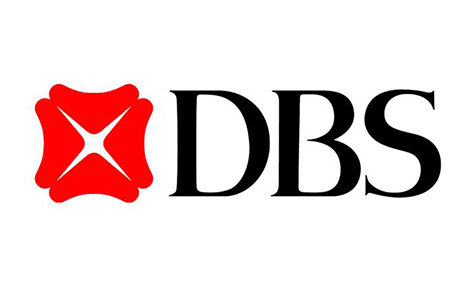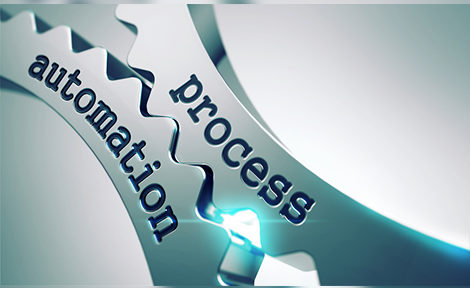10. Building and maintaining a diverse workforce
Employers need to understand that diversity goes beyond sex, race, ethnicity, age, national origin and religion and includes different work experiences, educational status, marital status, socioeconomic status, life experiences, background and upbringing.
Diversity creates challenges for employers because it’s not enough to simply try to create a diverse workplace — companies must make sure their workplace is inclusive and tolerant and one in which all employees feel valued and respected.
With the current transient state of employees, employers need to maintain a pulse on their organization, PricewaterhouseCoopers’ U.S. chairman and senior partner Tim Ryan said earlier this year. “We want to make sure we have a diverse group of partners,” he told EBN. “In the last two years, I’ve immersed myself in data on people three to six years away from [becoming] partner. I can tell you today how many of the underrepresented groups are in the pipeline.”
Building and maintaining a diverse and inclusive workplace starts at the top with senior management commitment to align diversity efforts with business goals and corporate strategies, XPertHR notes. From the outset, diversity efforts should be made during the recruiting and hiring process. For example, companies should cast a wide net beyond its immediate geographic pool and word-of-mouth hires to look for the right candidates based on merit, skills and qualifications. They should also make sure interviews are conducted by a diverse panel with different backgrounds and experience.
9. Preparing for workplace violence
Workplace safety has been top of mind for many employers, and OSHA requires companies to provide a workplace free from recognized safety and health hazards that could cause death or serious physical harm — which may include preventing acts of workplace violence.
Behavior may include actual acts of violence such as shooting, hitting and other forms of physical abuse, as well as threats of violence, including surveillance and stalking. It includes behavior that takes place on the employer’s premises and also outside the workplace if it affects working conditions.
To address the challenge, companies should first conduct a needs-assessment across its organization to ensure that it has the proper policies, practices and procedures in place to increase awareness, recognition and reporting of violence or potential acts of violence as well as the employer’s ability to respond.
XPertHR says policies in place should include a visitor policy safely securing the premises; a workplace violence prevention policy; a weapons policy (depending on state law) banning weapons from the workplace and imposing discipline for violations and a domestic violence policy (including a domestic violence leave policy).
In addition, new digital tools have become available in recent years, such as AlertMedia, which allows employers to communicate vital information with their workers by sending prepared information through various channels, such as text messages, voice calls, push notifications and emails, to employees before and during a disaster.
8. Developing employee handbooks
Having an up-to-date handbook is critical to managing a diverse workforce and promoting fairness and consistency across situations. But developing handbooks proves complicated for many companies, especially multistate and multijurisdictional employers. XpertHR’s survey confirms that employee handbooks remain a top challenge for employers when it comes to developing, implementing and enforcing employment policies.
But while often overlooked, handbooks are an important form of documentation that the IRS or the Department of Labor will most likely request during an audit, which could expose many small employers to potential risks.
As a result, employers should regularly update their employee handbook while carefully monitoring federal, state and local laws, paying particular attention to policies that may need to be updated frequently like workplace accommodations, EEO policies and predictable scheduling.
For multistate employers, XpertHR further suggests developing a general handbook based on federal requirements and providing state supplements for state policies, and using separate handbooks for each state.
7. Addressing employee drug use
Dominating headlines this year was the threat of opioid addiction in the workplace. Addressing and managing drug use and drug testing will remain one of the most challenging issues for employers who are tasked with making sure their workforce is efficient and operating safely and productively going into 2019.
Another perplexing challenge for employers today is dealing with increasing marijuana use for medical and recreational purposes: Medical marijuana is legal in approximately 30 states, and recreational marijuana use is now legal in 10 states and the District of Columbia.
To address these challenges, employers should develop, implement and enforce drug-free workplace policies prohibiting the use of unlawful drugs both on the employer’s premises and during working hours that impact judgment and interfere with employee safety, XpertHR notes. An employer also may prohibit the misuse of prescription drugs that are otherwise lawful.
6. Preventing security breaches
As more information moves to cloud-based systems, cyber safety will continue to be important to control. To protect private and confidential information and minimize the risk of a cyber breach, XpertHR advises employers to consider using security tools such as firewalls, two-step or biometric authentication methods, and encrypted data in the cloud to protect such information.
Employers also should make sure third-party vendors, partners and providers take similar security measures, limit access to confidential information and make sure employees and supervisors are only able to access if it is related to their job duties, XpertHR says.
5. Offering the right employee benefits
A tight labor market has made comprehensive benefit packages integral in attracting and retaining a talented workforce. This challenge is going to persist into 2019, and will continue to be a challenge to administer as employers must remain compliant with a myriad of laws like the ACA, ERISA, COBRA, HIPPA and GINA.
XpertHR suggests employers measure benefits offerings against competitors and assess what the marketplace is offering to ensure a competitive level of benefits. In addition, employers should identify benefits offered with the lowest employee participation levels and consider redesigning or eliminating unpopular benefits. As benefit managers reevaluate benefit strategies, the report also suggests benefits be tailored according to the needs and interest of multiple generations (i.e. younger employees may be more interested in child care and day care offerings).
4. Managing employee leave
The expansion of leave laws from the federal to local levels continues to present challenges for employers. Depending on size and location, an employer may be required to comply with a variety of different leave laws such as paid sick leave, paid family leave or military leave.
To properly address and manage leave law issues, an employer should first determine which leave laws they are subject to and understand how the leave laws work together, which leaves may be used concurrently and how to properly document leaves. Companies also need to ensure managers understand how to track, document, manage and schedule leaves. That includes ensuring they handle leave requests in a nondiscriminatory manner and avoid wrongfully denying any leave request and reprimanding employees for legitimate absences.
2018 was a big year for paid leave: Many companies including Estée Lauder, Bristol-Myers Squibb and PwC enhanced their family-friendly benefits and PTO policies, and many insiders expect other companies to follow in 2019.
3. Understanding workforce planning
Workforce planning broadly describes the “continual process an employer uses to align the organization’s business needs and priorities with those of its workforce to make sure it can comply with legislative, regulatory, service and production requirements and organizational objectives.” Workforce planning is a key challenge for HR professionals, requiring them to review all phases of the employee relationship from start to end in order to make strategic business decisions that have a positive impact on the employer’s bottom line.
Employers need to assess all factors that shape the workforce. For example, with respect to hiring, XpertHR advises hiring managers to understand new technologies and mobile applications, and how they can aid in recruiting. And when training new employees, HR managers should focus on professional development and building long-term skills in addition to providing leadership, support and mentoring opportunities to individuals who may be ripe for promotion.
It’s also important to evaluate employee retention and engagement. If an employer is losing employees, they should try to understand why (are other companies offering increased compensation, better benefits or better work-life balance, for example). It’s important to actively solicit feedback from employees through information meetings or employee satisfaction surveys, XpertHR notes, as this will provide keys to potential improvements an employer needs to make.
2. Complying with state and local issues
Many state and local governments have been making changes in response to a gridlocked Washington. As patchwork laws pop up across the country, employers (especially large, multi-state companies) will need to be vigilant on keeping compliant. For example, in the most recent midterm elections, Arkansas and Missouri passed initiatives to incrementally increase minimum wage over the next few years.
Employers are advised to carefully monitor existing and emerging state and local laws. Further, XpertHR recommends training managers, supervisors and employees on any need-to-know and emerging state and local laws.
1. Paying attention to federal changes
The Trump administration is having a significant impact on the workplace. There has been a continual push toward a smaller federal government, directing more authority to states and localities. Some of the leading federal issues that will remain top of mind in 2019 include the Affordable Care Act and the uncertain future of healthcare.
The best way to address these federal issues and the actions of the Trump administration, according to the report, is to be vigilant and closely monitor developments. Among those to watch: joint employment, overtime exemptions, GINA and wellness and the ADA, and employers should be on top of these expected changes.
With respect to immigration and federal laws, XpertHR suggests an employer should also be mindful of Title VII’s prohibition against discrimination based on national origin and citizenship. In addition, when it comes to LGBT rights, it’s best practice for an employer to consider sexual orientation and gender identity protected classes and protect LGBT individuals from discrimination, harassment and retaliation, as this will show that the employer is one who values tolerance, diversity and inclusion.
Source:







